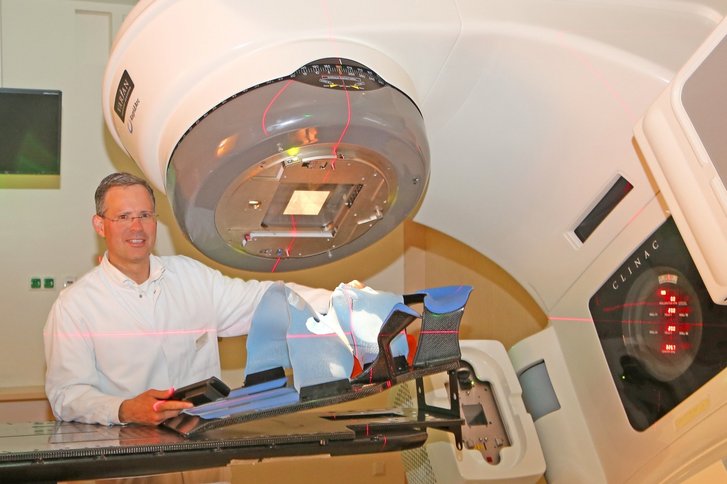
The intelligent and flexible calculation of the dose is particularly relevant for the Rapid-Arc and distinguishes the procedure from classical treatment options. The device develops its maximum effect almost exclusively directly in the tumour, side effects such as burns, diarrhoea or nausea are reduced to a minimum. This is possible because the linear accelerator moves around the lying patient like a gyroscope and the radiation intensity varies depending on the position.
The Rapid-Arc shows its greatest strength in the treatment of deep-seated or difficult to access cancerous growths, for example in the prostate or head and neck area. With the help of special computer tomography images, the exact location of the tumour is determined before the therapy. The data is then fed into the planning computer, which calculates the ideal treatment plan. The linear accelerator weighing several tons then irradiates according to this plan with an accuracy of 0.4 millimetres.
The Helios Hospital in Krefeld has two of these high-tech devices. The treatment is available to all tumour patients with a corresponding indication. In addition to the maximum effect with the greatest possible protection, the individual radiation sessions are also shortened by up to 70 percent. A radiation cycle usually lasts several weeks, which the patients usually survive well, because the new technology preserves the most important thing for them - a high quality of life.